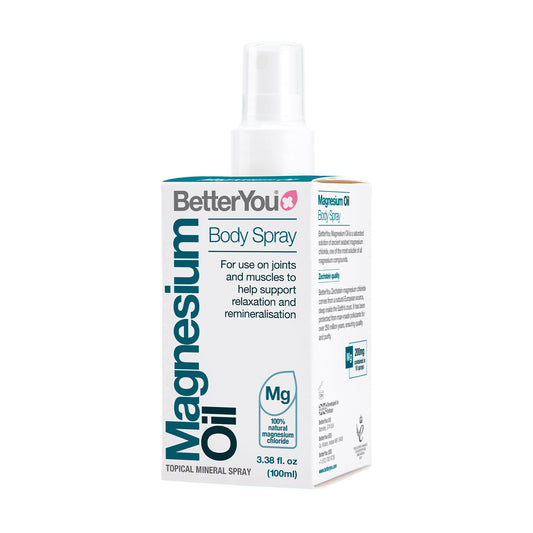Haemochromatosis, also known as “iron overload” can result in many symptoms which are detrimental to your health. The side effects are often similar to that of iron deficiency, so it’s important to identify if you may be at risk. Our expert guide takes you through the symptoms, causes, and treatment for haemochromatosis.
Table of Contents:
- What is Haemochromatosis?
- Symptoms of Haemochromatosis
- What are the Causes?
- Haemochromatosis Treatments
- Testing Your Iron Levels with BetterYou
- How Much Iron?
- Iron Overload vs Iron Deficiency
What is Haemochromatosis?
Haemochromatosis is a condition known as “iron overload”, where iron builds up slowly over time. Haemochromatosis is an inherited condition, which can be passed down from a parent to child. Though you are not guaranteed to develop it if only one parent has the condition, you may instead be a “carrier” and could pass it along if you have children yourself.
The condition can cause health problems relating to the liver, joints, pancreas and heart. These issues may appear as symptoms, which can be painful and unpleasant.
Haemochromatosis is not caused by taking too many iron supplements, however “secondary haemochromatosis” is caused by excessive iron intake.
Symptoms of Haemochromatosis
Haemochromatosis can cause a number of unwelcome symptoms which can be harmful to your health. The signs usually begin between the ages 30 and 60, and it is important to know these side effects to be aware of your risk of illness.
Common symptoms of haemochromatosis include:
- Fatigue - Feeling very tired all the time is a common symptom of haemochromatosis. You may feel like you have less energy to complete daily tasks or activities. Those feeling tired and experiencing fatigue may turn to energy supplements to give them a daily boost, though those containing iron should be avoided.
- Joint pain - Excess iron absorbed in those with haemochromatosis, is stored in your joints, which can cause pain and discomfort. Joint health vitamins are designed to support the strength and flexibility of your joints, though will not remove excess iron from them.
- Reproductive issues - Haemochromatosis may lead to male impotence and a loss of sex drive, this is due to iron overload causing low levels of testosterone. Many looking to become parents will turn to conception vitamins to support their health as they look to conceive.
- Irregular or absent periods - Haemochromatosis is also known for triggering the loss of a menstrual cycle in those who have periods. This is because the excess iron affects how quickly cells are made in the endometrium, or uterus lining. Periods may also be a reason why some tend to develop symptoms of haemochromatosis later in life, for example during the menopause. This is because losing iron via the menstrual cycle each month may help to regulate this iron overload. Iron is a key nutrient for a healthy period, however these levels must be at their optimum in order to support you through this monthly cycle.
- Weakness - Due to the scarring of the liver which can occur from haemochromatosis, you may feel weak and tired. Diabetes, which can be caused due to iron overload affecting the pancreas, can also cause you to feel weak and tired. Excess iron can also damage the heart, which in turn means it struggles to pump blood around the body, leaving you feeling weak.
- Weight loss - Unexplained loss in weight could be a symptom of haemochromatosis. A lack of appetite is also a side effect of haemochromatosis, and so may cause you to lose weight if you are not regularly hungry.
If you have any of the symptoms relating to haemochromatosis, it is recommended you see your doctor. If your family members have haemochromatosis, even if you show no symptoms, you should still seek medical advice as you may be susceptible. The condition can be better treated if detected sooner, whereas a delayed diagnosis could lead to more serious health conditions. These include liver disorders, diabetes, arthritis and even heart failure.
What are the Causes?
The cause of primary haemochromatosis is a faulty gene which affects iron absorption. This faulty gene can be passed down from parent to child, causing the hereditary condition which we know as haemochromatosis.
If both parents have the faulty gene, found in the HFE gene, then their offspring are likely to develop the condition. However, if only one parent has this faulty gene, then the child may not develop haemochromatosis, but could “carry” the condition and pass it on to their own children.
According to the NHS, haemochromatosis more commonly affects those from a white Northern European background, or those which have a Celtic heritage, such as Ireland, Scotland, and Wales.
Causes of Secondary Haemochromatosis
Secondary haemochromatosis is iron overload but not caused by the hereditary condition. This form of haemochromatosis is caused by taking too much iron. Whether that is by iron supplements, or through a diet of high sources of this type of mineral, it can cause iron overload to develop over time. Secondary haemochromatosis may also develop from having a lot of blood transfusions, which can increase the iron levels quickly.
Problems arising from secondary haemochromatosis are usually reversible if they are caught early enough. Therefore, it is a good idea to monitor your iron intake, and seek medical advice if any symptoms develop or you are concerned about your levels.
Haemochromatosis Treatments
Haemochromatosis does not currently have a cure. However, there are ways to treat it, to minimise the side effects and reduce the damage from high levels of iron.
Treatments for haemochromatosis include:
- Phlebotomy - This is what we call removing some of your blood to reduce the levels of iron. At first, this may need to be done more often, in order to regulate the iron in the blood, and then less frequently as your treatment goes forward.
- Chelation therapy - This treatment is a medication taken to reduce the amount of iron in the body, which is used for those where removing blood regularly is not a viable option.
Ongoing treatment also includes monitoring iron intake, by limiting the consumption of foods which contain high levels. As well as limiting vitamin C intake, as this type of vitamin helps the body to absorb iron. You can test your iron levels via a blood test, which measures your ferritin levels.
Testing Your Iron Levels with BetterYou
If you seek medical advice with concerns of your iron levels, they may administer an iron blood test to check how much iron is in your blood.
With BetterYou, you can monitor your blood iron levels without leaving the house. Our at home iron test kit means you can monitor whether you have too high, too low, or optimum iron levels.
The test indicates the Ferritin levels within the blood, which is a common way to check iron levels. Ferritin is a protein found in the blood which stores iron, and transports it around the body. This can give you a clear insight into any risk of iron deficiency or anaemia, as well as a test for haemochromatosis.
How our iron test works:
- Order your iron test online.
- Provide a wet sample of blood by filling a small vial using a quick prick of the finger once your test arrives.
- Use the prepaid envelope to send to our UKAS accredited lab partners - they will analyse your sample.
- Receive your results via email within 10 working days of the lab receiving your sample.
- We’ll provide a bespoke supplementation plan to help you increase or maintain your nutrient levels, once you have completed your at home health test, and your results have been sent.
How Much Iron?
According to the NHS, the recommended daily dosage of iron is:
- 8.7mg a day for men over 18
- 14.8mg a day for women aged 19 to 50
- 8.7mg a day for women over 50
It’s important to acknowledge the nutrient reference value guidelines, and always adhere to safe upper limits of nutrients when taking supplements.
Iron Overload vs Iron Deficiency
Haemochromatosis has similar signs to the symptoms of iron deficiency. Iron deficiency is when your body’s levels of iron become too low. This can lead to symptoms such as:
- lack of energy
- shortness of breath
- pale skin
- noticeable heartbeats.
These similar symptoms, which can be displayed when someone’s levels of iron are either too high or too low, can cause complications. This is why monitoring your iron levels is important, to help to identify whether you are at risk of health problems from non-optimal intake. Those with signs of low iron can remedy their side effects with iron supplements, which increase their intake. Whereas those with too much iron, may need medical intervention to help reduce the iron built up within their body.
Supplementing with BetterYou
We specialise in pill-free nutritional supplementation. From children’s supplements to help your little ones grow, to menopause supplements to support you in later life. Support your healthy lifestyle today, with BetterYou.



















